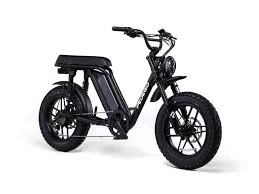9 月 . 03, 2024 08:41 Back to list
Understanding Gearing on a Mountain Bike
Gearing on a Mountain Bike Understanding the Essentials
When it comes to mountain biking, gearing is a crucial aspect that can significantly affect your riding experience and performance. The gearing system on a mountain bike determines how power is transferred from the rider’s legs to the wheels, influencing acceleration, speed, and climbing ability. Understanding gearing can help cyclists make informed choices when selecting a bike, throughout their rides, and during maintenance.
What Is Gearing?
Gearing refers to the combination of gears that determine the bike's mechanical advantage and pedaling efficiency. Mountain bikes typically have a system of front chainrings and rear cogs known as a cassette. The gear ratio, which is the number of teeth on the chainring divided by the number of teeth on the rear cog, establishes how hard or easy it is to pedal.
Types of Gearing Systems
Most mountain bikes today feature either a single chainring (1x) or a multiple chainring setup (2x or 3x). The 1x system has gained popularity due to its simplicity and ease of use; it eliminates the front derailleur, reducing weight and potential mechanical failures. However, it may limit the range of gears available for steep climbs or fast descents. Conversely, the traditional 2x or 3x systems offer a wider range of gear ratios, allowing for more options on varied terrain.
Choosing the Right Gearing
gearing on a mountain bike

The right gearing depends largely on the rider’s preferences, the type of terrain, and the intended use of the bike. For steep climbs in hilly or mountainous terrain, a bike with lower gearing is beneficial, making it easier to ascend challenging inclines without exhausting oneself. Conversely, if you often ride on flat ground or prefer speeds, higher gearing can facilitate faster rides without straining the legs.
Adjusting to Trail Conditions
As a mountain biker, adapting your gear choice based on trail conditions is vital. Loose, rocky, or muddy trails often require lower gears to maintain control and ensure smooth power delivery, while smooth, well-maintained trails might allow for higher gears. Riders should practice shifting gears efficiently; anticipating changes in terrain will enable quick shifts without compromising speed or control.
The Importance of Maintenance
Regular maintenance of your bike's gearing system is essential. Keeping your drivetrain clean and properly lubricated will ensure that shifting remains smooth and responsive. This not only enhances performance but also prolongs the life of your bike components. Learning how to adjust derailleur settings can also be a valuable skill for any mountain biker, especially when faced with rough terrains that might knock the settings out of place.
Conclusion
In summary, understanding the gearing system on a mountain bike can greatly enhance your riding experience. Whether you opt for a single chainring setup or a more traditional multi-chainring approach, it's essential to choose gears that match your riding style and terrain. By mastering gear selection and maintenance, you can fully enjoy the challenges and adventures of mountain biking. Happy riding!
-
The Main Application Scenarios of Mountain Bike
NewsOct.29,2024
-
Suggestions for Selecting and Maintaining Mountain Bike
NewsOct.29,2024
-
Characteristics of Kids Balance Bike
NewsOct.29,2024
-
Characteristics of Baby Stroller
NewsOct.29,2024
-
Characteristics and Advantages of Mountain Bike
NewsOct.29,2024
-
Baby Stroller Purchasing Suggestions
NewsOct.29,2024
-
Suggestions for Purchasing Kids Balance Bike
NewsOct.09,2024

